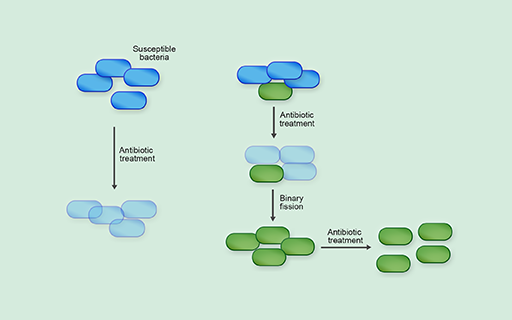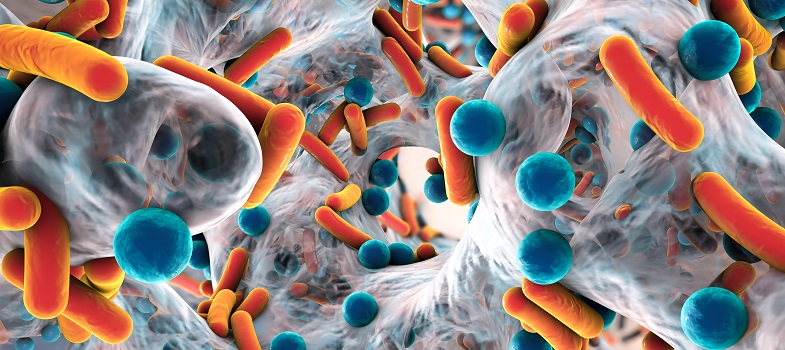3.3 Evolving resistance to antibiotics
Within a mixed bacterial population (for example, in the gastrointestinal system), some bacteria may be susceptible to antibiotic treatment while others are intrinsically resistant, or may have acquired resistance to antibiotics, via either genetic mutation or horizontal gene transfer. In the presence of antibiotics, the resistant bacteria have a survival advantage over the susceptible bacteria and are more likely to survive and reproduce. Because bacteria reproduce so quickly, resistant bacteria can quickly dominate the population (Figure 28).

Figure 28 Natural selection for antibiotic resistance. When susceptible bacteria, shown in blue, are treated with antibiotics they all die. However, antibiotic-resistant bacteria (shown in green) survive and replicate by binary fission. This new bacterial population is now completely non-susceptible to treatment with the same antibiotic.
Show description|Hide descriptionThis figure shows a schematic representation of how natural selection selects for antibiotic-resistant bacteria. The left hand side of the figure shows four susceptible bacteria cells represented as blue ovals. Following antibiotic treatment these cells die (represented as transparent blue ovals). The right hand side of the figure shows a population of bacteria in which one cell (in green) is resistant to antibiotics. Following treatment susceptible cells die however the resistant cell survives and replicates leading to a population of resistant (green cells) that do not die following antibiotic treatment.
Of course, changes to the bacteria’s environment made by us can affect the evolution of antibiotic resistance.




